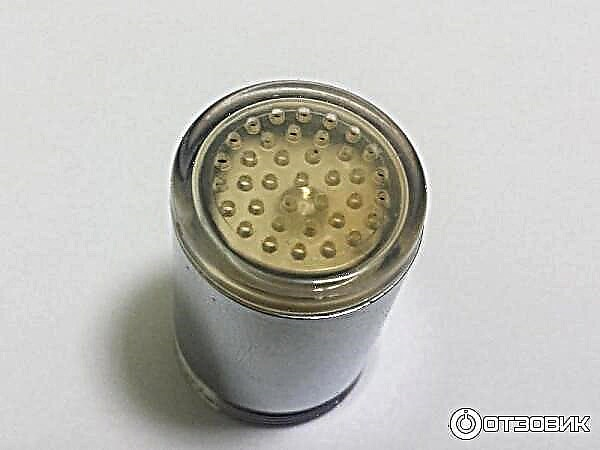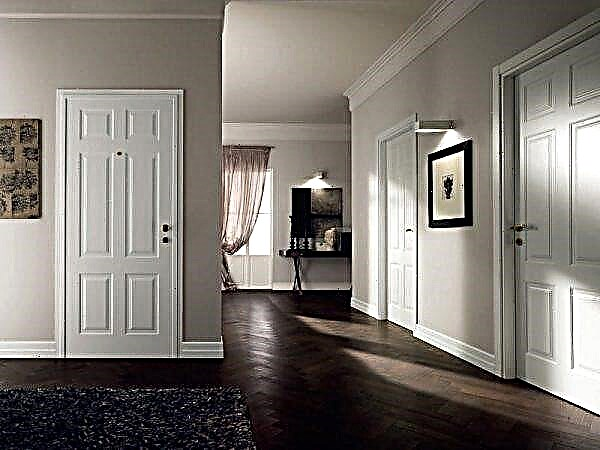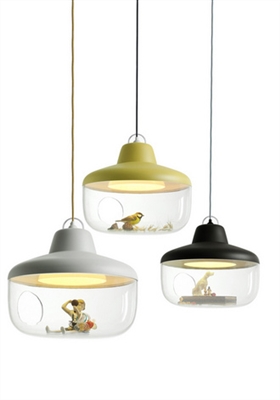One of the most simple in appearance and at the same time complex in execution is the style of minimalism. The designer’s task is to create an interior or product in which there will be nothing superfluous, non-functional. At the same time, minimalism implies comfort, but they achieve it by economical methods.
Japanese style is usually classified as minimalistic. As well as architectural structures, Japanese-style chandeliers are distinguished by both sophistication and practicality.

Style features
The Japanese style is characterized by the following features:
- Geometry. All elements of the interior are made in simple and strict forms. Preference is given to round or square objects.
- Natural materials. Stone and wood (especially bamboo) are the most used materials. Also used are rice paper, frosted glass, linen. The use of cheap artificial materials (e.g. plastic) is not allowed. However, the use of quality substitutes is quite possible. It is about cotton-silk tussa and pressed paper.
- Restraint of a color background, pastel shades. The light coming out of the lamp should be as realistic as possible. Lighting should not be blocked by any parts. Hieroglyphs as well as small patterns are widely used as decorations.
- Subdued light. Lighting should not be too bright. In large rooms, preference is given to installing several light sources of medium intensity instead of one, but powerful. Outdoor lighting is usually quite high.

Varieties of lamps
Japanese-style lamps come in a wide variety of designs:
- Wall lights. Used mainly for the organization of local lighting. At the same time, twilight is preserved in the room, which can be considered as part of a kind of oriental surroundings.
- Desk lamp. They are convenient for their mobility, since such a lamp can be moved to any part of the house. However, the desktop version of the lamp is quite rare in the Japanese interpretation.
- Ceiling lights. Most often act as the main light. In Japanese homes, ceiling lighting appeared not so long ago. The fact is that according to the old beliefs of the Japanese, the ceiling is similar to the heavenly surface, and in the sky there is no need for lamps.
- Outdoor lamps. Widely used in Japan to illuminate the adjoining space, benches, pedestrian walkways, arbors, etc.
- Floor lamps (floor lamps).

DIY Chandelier Making
To make a chandelier in the Japanese style, you will need such materials:
- rice paper (if this is not available, clouded glass or tracing paper will do),
- bamboo (using 15 × 15 wooden slats as a replacement) or oak,
- PVA glue,
- stain
- coarse rope or twine,
- old lamp (chandelier, sconce, table lamp).
Also, to complete the work you will need a set of tools:
- saw,
- sandpaper
- square ruler,
- color printer for printing Japanese drawings,
- brush
- scissors.

The order of the work:
- Using a saw, we cut the slats into pieces of the desired length. The size of the lamp depends on the size of the room and the desire of the customer. The tube frame will be made from the fragments obtained. The slats in horizontal position should be half as long as those that will be located vertically. The area of the manufactured frame should not exceed the area of the sheet of paper (tracing paper).
- Reiki process sandpaper. The task is to eliminate all irregularities and protrusions.
- Create a frame. We connect the slats with glue or rope. We give the finished design to dry.
- We print the selected image on the printer. If you want and skill, you can create a picture with your own hands. A volumetric pattern will also look good. The themes of the drawing should be appropriate: hieroglyphs or Japanese landscapes.
- We fix the finished picture on the frame. To fix the picture we use glue. And we glue very carefully so as not to damage the composition.
- We repeat what was done on the three remaining sides of the frame.
Advice! Depending on the creative idea, you can apply drawings both on all sides of the frame, and on one of them.
Mounting the base
The next step is to make the basis for the lighting device. To do this, you will need the working parts of the old lamp.
The work is performed in the following order:
- Saw a square detail from a tree or piece of plywood.
- We fix the cartridge with the conductor on the square.
- We install a lamp in the cartridge. Energy-saving bulbs are preferable, as they do not overheat. The Japanese-style lamp is made of natural fire-hazardous materials, so we immediately abandon lamps prone to overheating.
- We fix on the basis of the lampshade.
- We fix the lamp to the ceiling.

Thus, the manufacture and installation of the lamp in the Japanese style is not very difficult. It will take only a small set of materials, free time and diligence.
Glass
This is the most common option for making a Japanese-style lighting fixture. Stained glass, mosaics and colored glass are never used.
Glass of calm shades, most often white or beige, is suitable for such chandeliers. In this case, the glass is exclusively frosted. This is due to the fact that the Japanese greatly appreciate the moonlight.
It is they who are trying to achieve the effect of the radiance of this heavenly luminary with the help of opaque lamps.
The type of glass depends mainly on the cost of the material. For expensive models use first-class elite glass. For more modest options, inexpensive glass is used, but always quality.
Rice paper
Since ancient times, such material was used to create shades. Moreover, the Japanese did not process it. In rare cases, discreet painting was applied to the paper, which gave the chandelier special significance.
The light from such a device turned out to be warm, muffled, slightly yellowish.
Tree
In most cases, bamboo was used to create pendant chandeliers in the East. This strong and very beautiful material has invariably been present in the design of luminaires for many decades.
However, modern manufacturers have begun to replace bamboo with more accessible and familiar types of wood for a particular area. Manufacturers often use an exotic and very beautiful wenge tree or oak.
Since it is very important for the Japanese that everything is exclusively natural and very high quality, linen fabric was often used to create shades. Such material did an excellent job of its task, and was distinguished by its durability and environmental friendliness.




Despite the fact that in modern production plastic is used for most of various products, this has absolutely no effect on Japanese-style chandeliers. It is almost impossible to find a similar lamp that would be made of cheap plastic elements.
Selection rules
The Japanese-style chandelier will be a real decoration for any room. It perfectly complements the interior of the kitchen, living room, bedroom or hallway. High-quality lighting device will serve you for many years. But all this only on condition that you choose a real Japanese lamp, and not a cheap fake. Next, we’ll provide some simple but effective tips to help you distinguish a first-class lamp:
- Pay attention to the price. A modern person is very used to big discounts and sales. Of course, many shops of high-quality Japanese chandeliers often provide customers with certain bonuses. However, it should be remembered that the too low cost of the lamp is a reason to beware. If the seller offers you a product with a price of just over one thousand, then it is very unlikely that it is made of high quality natural materials.
Most likely, it will turn out to be a cheap plastic fake, which will not correspond to the withered qualities and will become unusable very quickly. Therefore, be extremely careful to save money.
- Appreciate the design. As mentioned above, Japanese-style chandeliers are distinguished by minimalism and high quality materials. At the same time, a real lamp is never colorful. If the number of shades in its design exceeds three or four colors, then most likely, before you is not a good model.
- Ask the seller for product certificates. A quality product certainly has the appropriate certificate. Do not forget to check with your supplier for the availability of these documents. If everything is in order with the goods, then you will be surely provided with all the necessary papers. And then you will be sure that you get a good chandelier.
The listed recommendations will help you quickly and easily pick up a first-class chandelier in the Japanese style, which will become a real decoration of your home.
See in the next video how to make an original lamp with your own hands, which will perfectly complement the Japanese interior.
Modern place
Japanese philosophy as part of interior design has successfully integrated into the decors of residential premises in the territory of the former Soviet Union. Interest in this culture is only growing. This direction is chosen by exotic fans. This style is also close to those who adhere to eastern philosophy - it is peace, harmony with oneself and the world. Given the popularity of Japanese cuisine, cafes and restaurants in this decor are not uncommon.


Such an interior combines minimalism, sophistication and the beauty of nature. Actively used natural materials, wood, fabrics. Each item has a specific place and its purpose. All things in the room are elements of the overall picture, they balance each other. This also applies to fixtures.


Lighting brightness
It is worth noting the main feature of the main lamps in such an interior - they do not shine as brightly as most modern chandeliers. The glow is very soft. Such models appeared on the Russian market relatively recently, but have already managed to get encouragement from buyers.
Such chandeliers play an important role in creating a peaceful atmosphere.
If you decorate a large room in the Japanese style (for example, a living room, a hall), then for full lighting you will need several chandeliers, which are recommended to be installed at the same distance from each other. One chandelier should be enough for a small bedroom, bathroom or hallway.




Minimalism
The chandelier should not have expressive decorative elements. Do not forget that the Japanese direction is based on conciseness, minimalism and space. The Japanese considered luxury and chic superfluous; catchy products are not used in the decoration of residential premises. It is restraint that ceiling lamps attract the attention of modern consumers.


Geometry
Another feature of such lighting devices is in design. Japan is strict geometric shapes. As a rule, a Japanese chandelier is square or rectangular. Such outlines are inherent not only in lighting devices, but also in other objects in the room.


Materials
For the manufacture of chandeliers in the Japanese style exclusively natural materials are used. For the manufacture of the frame, bamboo was most often used. Currently, instead of it, manufacturers use various types of wood - both exotic and Russian (oak, wenge and so on).


Lampshades are lined with rice paper - in accordance with folk traditions. Her color was left unchanged without the addition of paints. Considering that at the present time, not only the aesthetic effect, but also practicality is very important, paper is replaced with frosted glass. Such material gently scatters the rays - in accordance with the style.


Given the popularity of the Japanese style, you can guess that there are a lot of fakes and imitations of original products on the market. Fakes are made from artificial and cheaper substitutes.
Natural colors prevail in the Japanese interior, because people from the East have a special relationship with nature. This characteristic must also differ and a chandelier. The most common design options are plain, without a pattern and patterns. The use of hieroglyphs is allowed. They are used exclusively as decorative elements.


As additions, thematic images are also used. It is worth noting that the patterns should be neat and small in size. The standard decoration technique is when a black themed pattern is applied to a light background.


The color scheme used in the manufacture of chandeliers in the Oriental style consists mainly of white, brown, beige, black and their shades.
Fakes
Everyone knows that demand creates supply. In today's market you can find many fakes of a popular product. If you chose the Japanese style for the decoration of the room, you need to pay special attention to decorative devices. Next, you will learn about what to consider when choosing a Japanese-style chandelier.


Affordable value attracts buyers, but too low a price should alert. The average cost of a simple model, designed for one or two bulbs, should be about 4-5 thousand rubles. Larger chandeliers (4 shades) will cost about 10 thousand Russian rubles. If you are going to go to the store for a purchase, check out the prices on several sites or at various retail outlets.
The second thing to consider is the color scheme. A real Japanese chandelier should not be full of colors. Only calm natural shades are allowed, which harmoniously and easily fit into the main gamut of the room. The maximum number of shades that can be used in the design of a ceiling lamp should not exceed 3-4.



